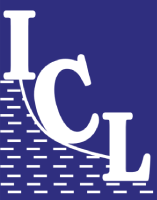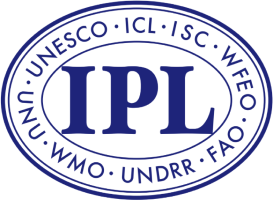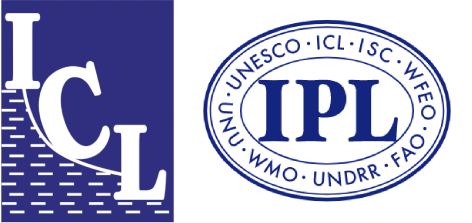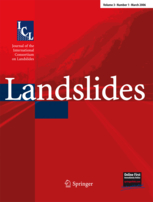The International Consortium on Landslides (ICL) proposed the “ISDR-ICL Sendai Partnerships 2015-2025 for Global Promotion of Understanding and Reducing Landslide Disaster Risk” in the Working Session “Underlying Risk Factors” during the 3rd World Conference on Disaster Risk Reduction (WCDRR) in Sendai, Japan, 2015. The Sendai Partnerships was adopted and signed by 17 United Nations, international and national stakeholders.
This sound global platform mobilize to pursue prevention, to provide practical solutions, education, communication, and public outreach to reduce landslide disaster risk. These Partnerships engage all significant stakeholders concerned with the challenge of understanding and reducing disaster risk, including relevant international, national, local, governmental, and non-governmental institutions, programmes and initiatives. The Partnerships focus on delivering tangible and practical results that are directly related to the implementation of the goals and targets of the post-2015 Framework for Disaster Risk Reduction. The text of Sendai Partnerships is as follows:
ISDR‐ICL Sendai Partnerships 2015‐2025 for Global Promotion of Understanding and Reducing Landslide Disaster Risk
ISDR‐ICL Sendai Partnerships 2015‐2025 for Global Promotion of Understanding and Reducing Landslide Disaster Risk
Tools for Implementing and Monitoring the Post-2015 Framework for Disaster Risk Reduction and the Sustainable Development Goals
At the 2nd United Nations World Conference on Disaster Reduction, which was held in Kobe, Japan, on 18-22 January 2005, the International Consortium on Landslides (ICL) co-organized a session which resulted in a global partnership and platform taking a holistic approach to research and learning on ‘Integrated Earth system risk analysis and sustainable disaster management’. This partnership was forged through a “Letter of Intent”, that was signed by UNESCO, UNISDR, WMO, FAO, UNU, ICSU, and WFEO. It further led to the adoption and implementation of the 2006 Tokyo Action Plan, thus creating a global partnership on Landslides, i.e., the current International Programme on Landslides (IPL) of ICL.
At the 3rd World Conference on Disaster Risk Reduction (WCDRR), which was convened by the United Nations and hosted by Japan in Sendai from 14 to 18 March 2015, the ICL and its IPL contributed further to the UN International Strategy for Disaster Reduction (ISDR) and co-organized the Working Session “Underlying Risk Factors” together with UNESCO, the Japanese Ministry of Land, Infrastructure, Transport and Tourism (MLIT) and other pertinent organizations.
At the Working Session, the causes that create risk and their cumulative effects, as well as the relevant achievements of the Hyogo Framework for Action 2005-2015, were reviewed. Steps to address the principal drivers of vulnerability and exposure and to support hazard and risk assessment were suggested. In addition, the participating scientific and academic institutions and governmental and non-governmental organizations proposed that the Sendai Partnerships 2015-2025 for Global Promotion of Understanding and Reducing Landslide Disaster Risk be established. This sound global platform will be mobilized in the coming decade to pursue prevention, to provide practical solutions, education, communication, and public outreach to reduce landslide disaster risk. These Partnerships will engage all significant stakeholders concerned with the challenge of understanding and reducing disaster risk, including relevant international, national, local, governmental, and non-governmental institutions, programmes and initiatives. The Partnerships will focus on delivering tangible and practical results that are directly related to the implementation of the goals and targets of the post-2015 Framework for Disaster Risk Reduction.
The Sendai Partnerships 2015-2025 for Global Promotion of Understanding and Reducing Landslide Disaster Risk are hereby established. They represent Tools for Implementing and Monitoring the Post-2015 Framework for Disaster Risk Reduction and the Sustainable Development Goals.
Partners in the “Partnerships” adopt the following Resolution:
We acknowledge that:
- Landslide disasters are caused by exposure to hazardous motions of soil and rock that threaten vulnerable human settlements in mountains, cities, coasts, and islands.
- Climate change will intensify the risk of landslides in some landslide prone areas through an increase in the frequency and/or magnitude of heavy rainfall, and shifts in the location and periodicity of heavy rainfall.
- Developments in mountains and coastal areas, including construction of roads and railways and expansion of urban areas due to population shifts, increase exposure to hazards of landslides.
- Although they are not frequent, strong earthquakes have potential to trigger rapid and long runout landslides and liquefaction. Earthquake-induced coastal or submarine large-scale landslides or megaslides (with depths on the order of hundreds of meters to one thousand meters) in the ocean floor can trigger large tsunami waves. These hazardous motions of soil and water impacting on exposed and vulnerable population can result into very damaging effects.
- The combined effects of triggering factors, including rainfall, earthquakes, and volcanic eruptions, can lead to greater impacts through disastrous landslides such as lahars, debris flows, rock falls, and megaslides.
- Understanding landslide disaster risk requires a multi-hazard approach and a focus on social and institutional vulnerability. The study of social and institutional as well as physical vulnerability is needed to assess the extent and magnitude of landslide disasters and to guide formulation of effective policy responses.
- Human intervention can make a greater impact on exposure and vulnerability through, among other factors, land use and urban planning, building codes, risk assessments, early warning systems, legal and policy development, integrated research, insurance, and, above all, substantive educational and awareness-raising efforts by relevant stakeholders.
- The understanding of landslide disaster risk, including risk identification, vulnerability assessment, time prediction, and disaster assessment, using the most up-to-date and advanced knowledge, is a challenging task. The effectiveness of landslide disaster risk reduction measures depends on scientific and technological developments for understanding disaster risk (natural hazards or events and social vulnerability), political “buy-in”, and on increased public awareness and education.
- At a higher level, social and financial investment is vital for understanding and reducing landslide disaster risk, in particular social and institutional vulnerability through coordination of policies, planning, research, capacity development, and the production of publications and tools that are accessible, available free of charge and are easy to use for everyone in both developing and developed countries.
We agree on the following initial fields of cooperation in research and capacity building, coupled with social and financial investment:
- Development of people-centered early warning technology for landslides with increased precision and reliable prediction both in time and location, especially in a changing climate context.
- Development of hazard and vulnerability mapping, vulnerability and risk assessment with increased precision, and reliability as part of multi-hazard risk identification and management.
- Development of improved technologies for monitoring, testing, analyzing, simulating, and effective early warning for landslides.
- Development of international teaching tools that are always updated and may be used free of charge by national and local leaders and practitioners, in developed and developing countries through the Sendai Partnerships 2015-2025.
- Open communication with society through integrated research, capacity building, knowledge transfer, awareness-raising, training, and educational activities to enable societies to develop effective policies and strategies for reducing landslide disaster risk, to strengthen their capacities for preventing hazards to develop into major disasters, and to enhance the effectiveness and efficiency of relief programs.
- Development of new initiatives to study research frontiers in understanding landslide disaster risk, such as the effect of climate change on large-scale landslides and debris flows, the effective prediction of localized rainfall to provide earlier warning and evacuation especially in developing countries, the mechanism and dynamics of submarine landslides during earthquakes that may cause or enhance tsunamis, and geotechnical studies of catastrophic megaslides for prediction and hazard assessment.
We further agree to advocate that activities should be balanced at regional, national, and community levels in order to empower and engage more professionals, practitioners and decision-makers in formulating policies and establishing programmes for the benefit of disaster risk reduction efforts.
We further agree that progress made in the contribution of the Sendai Partnerships 2015-2025 for Global Promotion of Understanding and Reducing Landslide Disaster Risk toward the implementation of the Post-2015 Framework for Disaster Risk Reduction will be reported and emerging challenges will be discussed every two years at the Global Platform for Disaster Risk Reduction in Geneva.
A Call for joining the Partnerships
Competent global, regional, national, and local institutions participating in the 3rd WCDRR and in the implementation of the Post-2015 Framework for Disaster Risk Reduction are invited to support this initiative by joining and signing these Partnerships through participation in clearly defined projects related to the issues and objectives of these Partnerships. The potential partners are requested to be in contact with the secretariat of the host organization.
Host Organization and Secretariat
The International Consortium on Landslides (ICL) hosts the Sendai Partnerships 2015- 2025 as a voluntary commitment to the United Nations World Conference on Disaster Risk Reduction, Sendai, Japan. The ICL Secretariat in Kyoto, Japan, serves as the Secretariat of the Sendai Partnerships.




